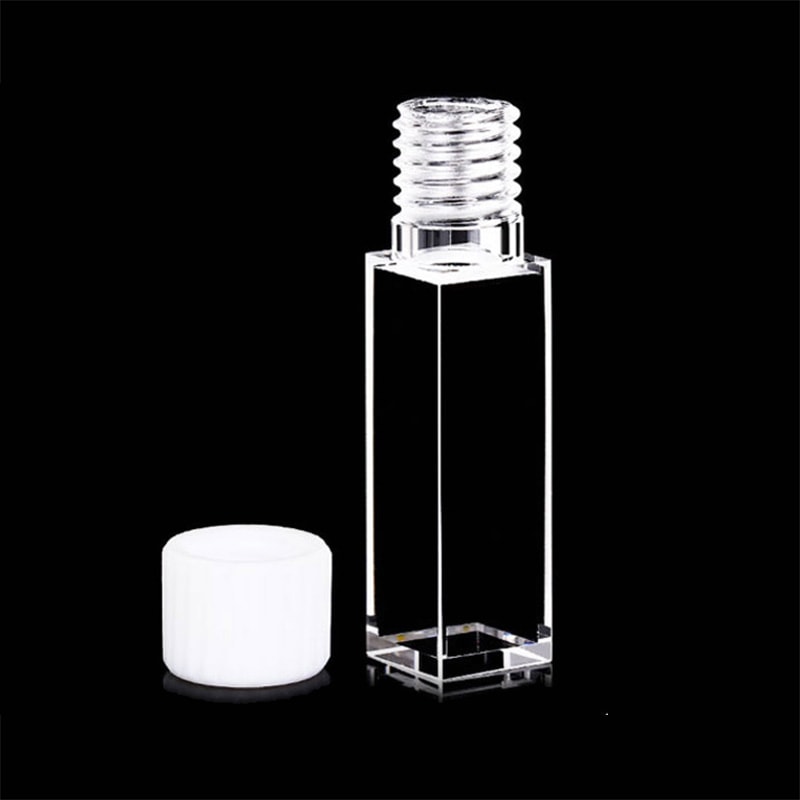Spectrophotometry that reveals the secret of light transmittance and absorption across particular wavelengths, is an essential method of scientific discovery. The cuvette is the core of spectrophotometry. It’s a basic yet crucial vessel used to store samples for analysis. They may look simple, yet their intricate design including the length of cuvette paths to the choice of material that they are made of, can provide precise data about substance concentration and high-quality. Explore the world of cuvettes and the dimensions they take. They affect the results of every experiment.
Power of Cuvette Pathlength
Imagine the beam of light passing through a liquid. The result is dependent on the size of the cuvette, or the distance over which light travels. A standard 1cm path length cuvette is usually the go-to for many labs, striking a balance between sensitiveness and practicality. What’s the reason? The longer the path longer, the more light will be absorbed. This increases the signal in small samples. A shorter path can make a huge difference when it comes to highly concentrated solutions, such as the nucleic acid or proteins. This method decreases the amount of dilution that is required, saving precious samples and reducing preparation times. What’s the lesson to be learned? The art of matching path length to sample requirements is not obvious and increases reliability.

Image credit: cuvet.co
Cuvette Dimensions and Size Cuvette Dimensions and Size: There’s More than you think
The cuvette’s dimension isn’t just about how much liquid can be contained, but also how it interacts with the instrument. Cuvettes come in different sizes and shapes, which are suitable for specific applications. Semi-micro cuvettes are an example, with their smaller dimensions and higher wall thicknesses, are made to handle small volumes of samples. Think of a couple of nanoliters or an uncommon biological extraction. Thicker walls reduce the space inside, allowing light to flow through a condensed sample without wasting a drop. This is a significant improvement over the standard cuvette. It takes less steps to pipette, is less susceptible to errors and delivers results that are solid. This is an innovative tweak that proves size isn’t only an amount of numbers, it’s an important factor to consider.
The 1cm Path Length Cube The 1 cm Path Length Cube: A Lab Favorite
Why does the 1 cm path length cuvette reign supreme in so many experiments? This is the best place for biological experiments where every milliliter is important. This standard design gives consistently high absorbance without overpowering the detector, making it perfect for everything from DNA purity checks to enzyme tests. It’s not the hero that fits all. If you change it for a cuvette with a different geometry or path length, such as one for studies on emission, the results can be extremely distorted. Choosing the right instrument is crucial, and do not use only the one you’re familiar with. A mis-matched cuvette can be compared to an instrument that is tuned incorrectly but not exactly right.
Materials Matters: More than Size and Path
Cuvette size is just one aspect of the problem. The material choice is what makes the difference. Glass and quartz cuvettes are notable for their exceptional transmission, letting light zip through with minimal interference. Cuvettes made of glass are tough as well as reusable and suitable for spectroscopy. Plastic cuvettes are also inexpensive and simple to use. Utilize them and dispose of them. No need to clean or clean up after, and no risk of cross-contamination. These are great for testing in aqueous fluids or speedy DNA/RNA tests. The cost? lower accuracy at certain wavelengths. For those who are a purist, quartz is preferred while pragmatics might prefer plastic.
Perfect Practice and Precision
The appeal of cuvettes lies in their ability to adapt. With spacers, shorter paths are able to deal with concentrated sample. The larger vessels are suitable for bigger volumes. The quality of the results are influenced by the path length as well as the size and substance utilized. Take a look at a lab testing the amount of protein. A semimicro cuvette offers shorter paths, which reduces the need for dilution and gives reliable results quicker. If you compare that to an ill-advised cuvette swap mid-experiment and the results are distorted, it’s no wonder. It is a great reminder that the smallest details can have a big impact on the spectrophotometry.
Cuvettes may be small however their purpose is significant. These vessels, which range from a 1 centimeter cuvette’s length, to custom dimensions can bridge the gap between the sample and the insight. If you’re after quality or precision, the right cuvette will transform a weak measurement into a superior one.
